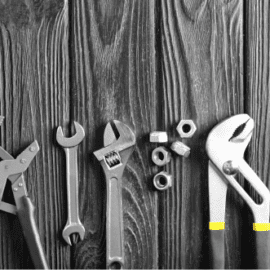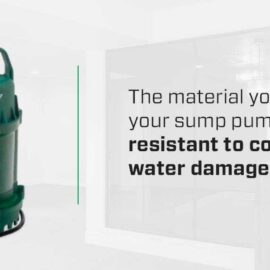All types of pipes, plastic and copper, can burst when they freeze. Unfortunately, dealing with a burst pipe is usually not as simple as calling your local plumber. As your local plumber, we can tell you: a small leak in your pipes will usually drip 22 gallons of water each day – so imagine what a burst pipe will do! AND imagine if the break is within your walls, which it is likely to be. When a leak is within your walls the damage escalates as it impacts drywall and flooring. Unfortunately, moisture within your walls can lead to wood rot, mold and a number of other issues that can usually only be handled by remediation and replacement of all permeable construction material – not a cheap repair. Frozen pipes can cause unbelievable amounts of damage, but luckily, frozen pipes are largely preventable. Let’s cover a few tips:
- Keep the heat on. This may sound simple, but as you can read in our post Are You in a High Risk Group for Freezing Pipes in Cleveland?, high risk groups include home owners with no heat and those that may leave their home for an extended period – vacation or maybe an emergency. If you’ll be away from the house for more than a few days in periods of cold temperatures, make sure to set the thermostat for 55 and arrange for a neighbor to check in, turn on the water and make sure the heat is still running each day. And overall, set the thermostat higher to maintain the heat and keep cold spots from getting too cold.
- Keep garage doors closed. Again, it’s something we don’t think too much about and it isn’t uncommon to see a neighbor that has left their garage door open, but in cases of extreme cold, that can cause pipes in the area to freeze quickly.
- Keep doors open to maximize flow of heat throughout the house. Especially for those of us in the Cleveland and Lorain areas in a larger, older, home – it’s quite common to shut some doors and avoid heating rooms we don’t use. However, in cold temperatures, you want the heat to flow through all your rooms in order to keep pipes warm that are on outside walls.
- Open cabinets below plumbing fixtures. Your bathroom sink may have a vanity and your kitchen sink most likely has a cabinet underneath. Open those doors and any cabinet doors hiding pipes. The idea here is that you want the pipes exposed to the warmth of the house, not hidden behind cabinet doors.
- Insulate pipes. If you have pipes in crawl spaces, garages, or areas that are known to get cold, wrap them with pipe insulation – usually a tubular foam insulation (pipe sticks) will do the trick, or a fiberglass wrap near hot water heaters. A good home inspector would have pointed out all your uninsulated pipes that may be prone to freezing, so if this is your first winter in the home, look back over that home inspection report.
- Let your water drip. That’s right. If you have pipes that are prone to freezing, keeping a little bit of water running through those pipes can keep them from freezing. It may sound wasteful but consider this: a drip of water will waste one gallon/hour, or 2cents per night – a broken pipe will release 50 gallons per minute. The fear being that if a pipe breaks while you’re sleeping or away from the house, hours of rapid water flow can go by without interference. The faucet farthest from your water meter should be left dripping to draw the water throughout the house.
So avoid frozen pipes and expensive water damage clean up by following these six tips and as always, contact ASAP Plumbing for more information or a free quote.



